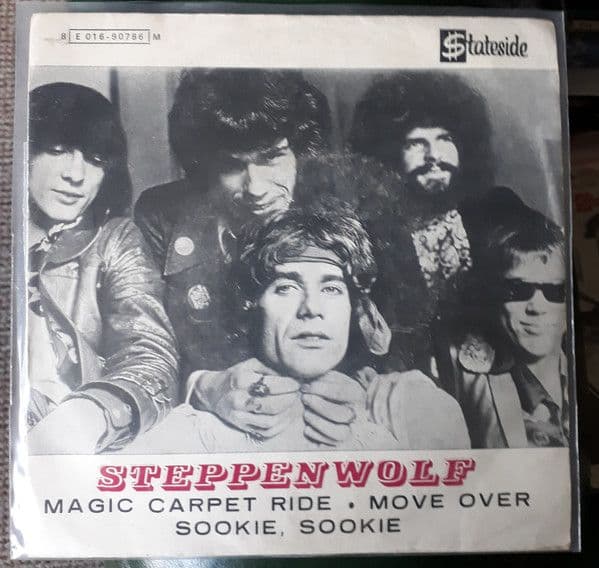
Soaring to Freedom: The Enduring Psychedelic Journey of “Magic Carpet Ride”
Some songs don’t just ask you to listen; they invite you to embark on a journey, to leave the mundane behind and embrace a sense of boundless possibility. For many of us, especially those who came of age during the revolutionary late 1960s, Steppenwolf’s “Magic Carpet Ride” is one such indelible invitation. More than just a rock anthem, it became a sonic symbol of an era defined by exploration, rebellion, and a vibrant sense of freedom. Released in September 1968, as a single from their album Steppenwolf the Second, this electrifying track quickly captivated the airwaves, soaring to a peak position of No. 3 on the Billboard Hot 100. Its immediate success solidified Steppenwolf as a dominant force in the burgeoning psychedelic rock landscape, cementing their place alongside other counterculture icons.
The story behind “Magic Carpet Ride” is as intriguing as its pulsating rhythm. While Steppenwolf frontman John Kay is the iconic voice, the song’s genesis lies with guitarist Rushton Moreve and drummer Jerry Edmonton. The band was reportedly experimenting in the studio, with Moreve laying down the memorable bassline and Edmonton contributing the driving drum beat. Kay then crafted the lyrics, channeling the spirit of the times—a yearning for escape, a celebration of altered states of consciousness, and a playful yet profound invitation to experience something new and exhilarating. The song’s composition was a collaborative effort, a testament to the band’s collective energy and their ability to tap into the zeitgeist of the era. It wasn’t just written; it felt created from the very fabric of the late sixties.
At its core, “Magic Carpet Ride” is an ode to escapism and the intoxicating allure of breaking free from conventional limitations. The “magic carpet” serves as a powerful metaphor for various forms of liberation: be it through music, imagination, or even, for some, mind-altering experiences. The lyrics speak of leaving worries behind (“I like to dream, yes, yes, right now / Dream about the things that we can do”) and embarking on a whimsical adventure (“We’re flying high, we’re doing what we want to do”). For those who lived through the intense social and political upheaval of the late 60s, the song offered a vibrant, almost tangible sense of liberation—a chance to transcend the anxieties of the world, even if only for a few minutes. It spoke to the desire for a higher plane of existence, a place where rules could be bent and spirits could soar.
The musicality of “Magic Carpet Ride” is what truly makes it soar. John Kay’s distinctive, gravelly vocals possess an undeniable swagger, perfectly conveying the song’s rebellious spirit. The driving, almost hypnotic organ riff, courtesy of Goldy McJohn, is instantly recognizable and sets a mesmerizing tone. And, of course, the guitar work, particularly the electrifying solo, is a masterclass in classic rock bravado. The entire arrangement builds in intensity, creating a sensation of truly lifting off and flying. It’s a testament to Steppenwolf’s raw power and their knack for crafting songs that were both musically compelling and thematically potent. The production, while rooted in its time, still possesses a vibrant energy that pulls you into its orbit.
“Magic Carpet Ride” transcended its status as a mere song, becoming a cultural touchstone. It was featured in numerous films and television shows, forever linking its sound to the adventurous spirit of its era. For older listeners, hearing those opening notes today can instantly transport them back to a time of idealism, experimentation, and a collective yearning for a world without boundaries. It’s a vivid reminder of youthful exuberance, the thrill of discovery, and the intoxicating feeling that anything was possible. Like a well-worn photograph, “Magic Carpet Ride” invites us to revisit those memories, to feel the wind in our hair, and to once again soar through the boundless skies of our past.